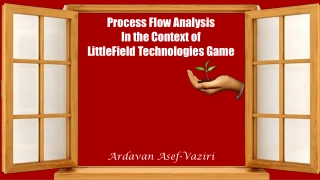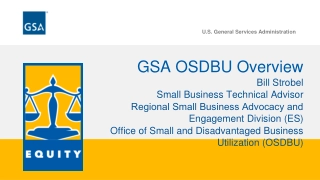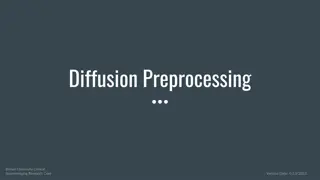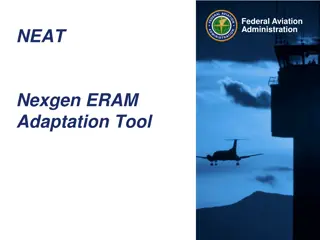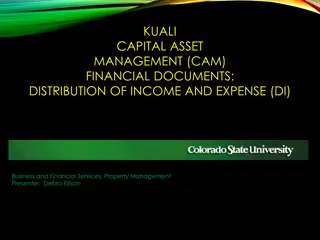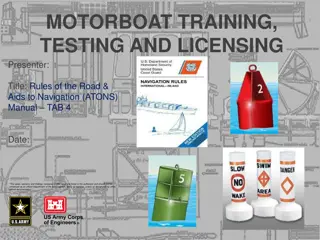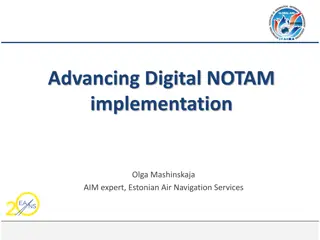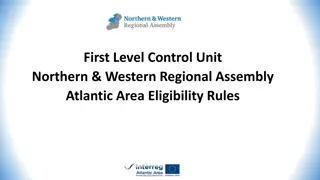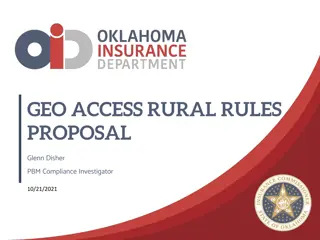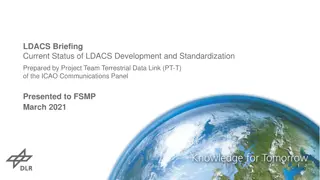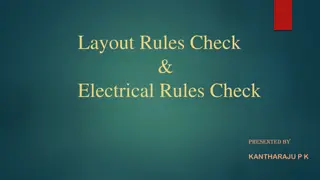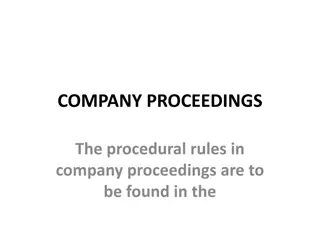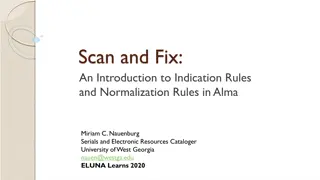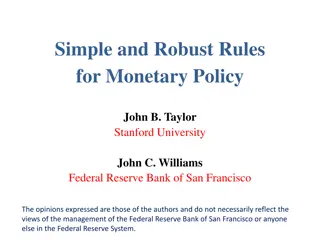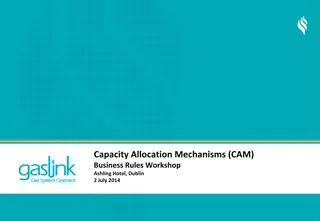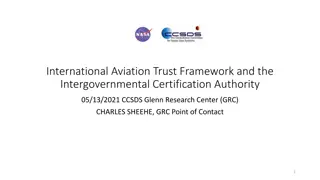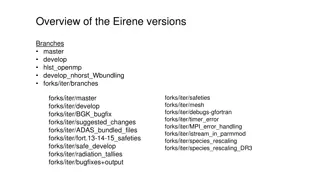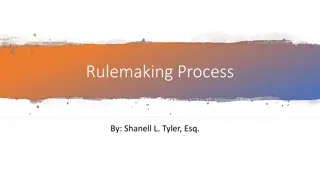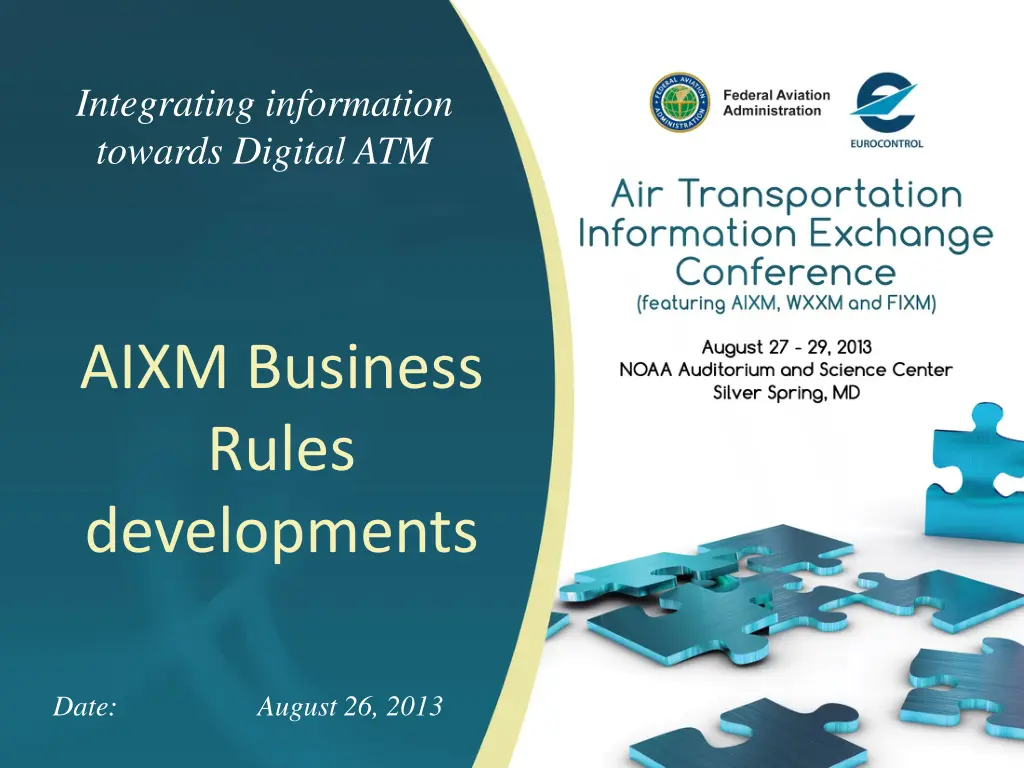
Developing Digital ATM Business Rules with AIXM Integration
Explore the integration of information towards digital ATM development with AIXM business rules, validation of AIXM data, use of SBVR, examples of AIXM BR rules, and progress in the AIXM community project.
Download Presentation

Please find below an Image/Link to download the presentation.
The content on the website is provided AS IS for your information and personal use only. It may not be sold, licensed, or shared on other websites without obtaining consent from the author. If you encounter any issues during the download, it is possible that the publisher has removed the file from their server.
You are allowed to download the files provided on this website for personal or commercial use, subject to the condition that they are used lawfully. All files are the property of their respective owners.
The content on the website is provided AS IS for your information and personal use only. It may not be sold, licensed, or shared on other websites without obtaining consent from the author.
E N D
Presentation Transcript
Integrating information towards Digital ATM AIXM Business Rules developments Date: August 26, 2013
Validation of AIXM 5.1 data - Does the data make sense? - Is it compliant with international standards ? - Do I respect recommended practices? - = AIXM 5.1 UML AIXM 5.1 XSD Syntactic check Semantic check - Check the compliance of an XML dataset with the XSD grammar - Performed by standard XML parsers (e.g. xerxes, MSXML, XMLSpy, etc.) AIXM 5.1 XML Business Rules Airport features
Use of SBVR SBVR = (OMG) Semantics of Business Vocabulary and Business Rules defines the vocabulary and rules for documenting the semantics of business vocabularies, business facts, and business rules. It identifies two types of business rules Structural rules Operative rules AIXM 5 has adopted this terminology and identifies the following business rules: AIXM Structural rules: the enumerations of values (datatypes) (Most) coded already in the AIXM schema AIXM Operative rules: rules extracted from official documents (ICAO Annexes), minimum data rules, consistency rules, recommended practices, coding rules These are the rules that we try to capture as part of the current BR project
SBVR for AIXM BR Structural rules examples (that are not captured as data types): Each [...].lowerLevel that has an uom equal to 'FL' should have 2 or 3 digits. Operative rules examples: Each AirportHeliport.ARP must have horizontalAccuracy and AirportHeliport.ARP.horizontalAccuracy should be at most 1sec Each DepartureLeg that has a speedLimit must have a speedReference Each ElevatedCurve that has a verticalAccuracy must have an elevation
SBVR for AIXM Work in progress Community Project small stakeholder group, mostly industry Started in June 2013 Baseline of 1300 potential rules coming from AIXM 4.5 and previous projects (AIXM-ARINC 424 mapping, Digital NOTAM, etc. Initial SBVR formulated First phase Airspace and SBVR profile Results expected to become public by October 2013
SBVR in AIXM - example ICAO Annex 11: If a control zone is located within the lateral limits of a control area, it shall extend upwards from the surface of the earth to at least the lower limit of the control area. SBVR equivalent:
Encoding Business Rules ISO Schematron Schematron (http://www.schematron.com/) is an open language for the validation of XML document whose specification is standardized (ISO/IEC 19757) There are 6 basic elements in ISO Schematron: assertion, rule, pattern, schema, namespace and phase. AIXM 5.1 Business rules 7
Encoding Business Rules ISO Schematron <assert> and <report> elements Test attribute Simple declarative sentences in natural language <assert> used to tag assertions positively <!-- The assert element matches if test is false --> <assert test="//designator"> An AirportHeliport shall have a designator. </assert> <rule> element Used to group assertions Has a context: if the context matches, the assertions are tested <pattern>,<phase>,<schema>: used to logically group rules AIXM 5.1 Business rules 8
Encoding Business Rules ISO Schematron Operational Rule Translation in SBVR Each ProcedureTransitionLeg.theSegmentleg that has legTypeARINC equal to AF must have a turnDirection. <SegmentLeg> </SegmentLeg> <legTypeARINC>AF</legTypeARINC> <turnDirection>L</turnDirection> <rule id="1" -> unique identifier of the rule context="// SegmentLeg[@legTypeARINC='AF'] " ->Defines the conditions of the rule (If attribute SegmentLeg.legTypeARINC= AF ). ->The rule will be tested if the context is true. Simplified ISO Schematron example <rule id="1" context="//SegmentLeg[@legTypeARINC='AF'] "> <assert id="1_1" test="boolean(@turnDirection)"> </assert> </rule> <assert id="1_1" -> unique identifier of the assertion test="boolean(@turnDirection)" -> the logical test to be performed. The assert element matches if the logical test returns false (in this case, if the turnDirection is not provided). AIXM 5.1 Business rules 9
Contact Information Eddy Porosnicu (EUROCONTROL) eduard.porosnicu@eurocontrol.int +32 (2) 729-3326 Diana Young (FAA) diana.young@faa.gov +1 (202) 385-7445

